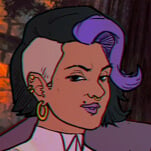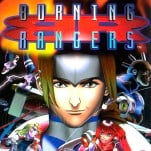The Original Playstation Is 30. It’s Well Past Time to Rerelease These 13 Games.

The Playstation arrived on the scene in North America 30 years ago this week, and somehow, in all of that time, not all of the games for the system that deserve a second chance have been rereleased. It’s a travesty, truly, and one we aim to do our part in fixing.
The good news is that the Playstation’s library is fairly well-represented in the present. Sony puts out quite a few classic gems on the Playstation Store, available today either through a subscription to Playstation Plus or for $10 a pop as a digital purchase, meaning you don’t need us to start yelling about the need for Jumping Flash! or the original Armored Core(s) or Valkyrie Profile. Capcom recently put Dino Crisis and Breath of Fire IV on GOG, Fear Effect just hit the Switch, Playstation 4, and Playstation 5 in August… we’re eating well with rereleases for the system, all things considered. But we could be doing so much better still.
Here you will find a mix of games that were released decades ago in North America and then never again, ones that found their way to digital marketplaces multiple Playstations ago but have yet to be reintroduced on the PS4 or PS5, and titles that never made it out of Japan, but still could. And sure, a few that maybe will never be rereleased, and you will have to play unofficial translations of in order to ever experience them, but hey: filling those gaps is what unofficial translations are for, and alerting you to the existence of those gaps here is a key first step in your journey.
Ace Combat 3: Electrosphere

Developer: Namco
Publisher: Namco
1999
“But Marc,” you say. Didn’t Ace Combat 3: Electrosphere come out in 2000? Not the one I’m demanding. The version of Electrosphere that arrived in North America is significantly cut back in terms of both missions and story. The original Japanese edition of the game that Namco didn’t have to make localization budget decisions about, though? That’s a philosophically-minded classic about how flying jet fighters feels incredible, sure, but you also contend with questions of purpose, the nature of humanity, and whether there’s a better way to live for all. There is not, uh, any of that in the 2000 international release.
We deserve the version of the game North America didn’t get, is the thing. And sure, there will be licensing costs because it’s Ace Combat—even if it’s futuristic Ace Combat—and the game would need to be localized, but it should be.
Mizzurna Falls

Developer: Human Entertainment
Publisher: Human Entertainment
1998
Human Entertainment, makers of the Clock Tower and Fire Pro Wrestling series back in the ‘90s, did much more than just those things. They also closed down and its employees went their separate ways to form Nude Maker, Spike, Sandlot, and Grasshopper Manufacture. Before all of that, though, there was Mizzurna Falls, which also predates Shenmue. If you’ve played Mizzurna Falls, then you know why that seemingly unrelated point is being brought up: Mizzurna Falls is an open-world game with a clock and a focus on realism. You have seven days to explore a small town and uncover the mystery of a death and a missing person case, and there is simply no way for you to play things through the right way the first time and earn the best of the three endings before those seven days are up. There is too much to do, to see, to discover, to accidentally drive into, to notice was blatantly inspired by the works of David Lynch, for you to get it all the first time around. You can’t even save your progress without burning in-game clock, and events—even ones that seem required—are missable.
A less polished, less forgiving Deadly Premonition is not entirely inaccurate, but don’t put too much stock into that comp, either. Mizzurna Falls was doing its own thing, and first, and getting a chance to discover that for yourself will take someone picking up the rights to it post-Human, or emulating it with the existing unofficial translation.
Mega Man Legends, Mega Man Legends 2, The Misadventures of Tron Bonne

Developer: Capcom
Publisher: Capcom
1998, 2000
While we were blessed with digital rereleases of this trio of 3D, action-adventure titles on the Playstation 3—they are still there for now if you have a PS3 hooked up or in storage—we have not been so lucky since. And Capcom, for all of their love of putting sub-series of Mega Man titles into collections again and again, has not done so with the unfairly maligned Legends games. Mega Man Legends is odd, sure, and there is plenty about it that is going to feel very 1998, but it’s also great, and beat Zelda’s transition to 3D via Ocarina of Time by 11 months. You know you want to play Mega Man: Tomb Raider. How could you not? The cast of characters add something special to the proceedings, as well, which is how The Misadventures of Tron Bonne ended up being made in the first place. Capcom loves a spinoff, sure, but they were right to do that here.
Gradius Gaiden

Developer: KCET
Publisher: Konami
1997
Gradius Gaiden wasn’t developed by the core Gradius team, and it wasn’t made for the arcades, but both of those facts are what led to it being, if not the best Gradius game, then certainly in the conversation. Freed from the constraints of a numbered game in the series or having to recycle levels for portable conversions and armed with the power of the Playstation, a team at Konami Computer Entertainment Tokyo decided to ratchet up everything they had learned about the series from porting a collection of arcade titles, and try to one-up everything they felt they could improve upon from those titles. The results were fantastic, and only for Japanese Playstations until the 2006 Gradius Collection on the Playstation Portable finally brought it worldwide.
That was 19 years ago; bring it back, Konami.
Einhänder

Developer: Square
Publisher: Sony Computer Entertainment
1998
While we’re on the subject of tremendous horizontal shooters on the Playstation: Einhänder. Square is known for its role-playing games first and foremost, but they did quite a bit of experimenting on the Playstation, to the point of creating a story-driven STG that Sony published in North America. This was baby’s first digital import, back in the early Playstation 3 days where you learned that hey, you could make a second account based in Japan and check out that region’s store, too, and that’s the only access to Einhänder that’s existed since the original Playstation release. While Gradius and R-Type games had their options, Einhänder focused on an arm on your ship that could grab onto a variety of secondary weapons, storing some of them for strategic use, and acquiring them in the first place requires strategy, too: if you shoot the enemy cannon you want to equip, then you’ll blow it up instead. Just an excellent game in every respect, and Square mostly pretends it never happened.
Tear Ring Saga

Developer: Timanog
Publisher: Enterbrain
2001
Shouzou Kaga was the creator of—and writer on—the earliest Fire Emblem games, including but not limited to the fantastic Genealogy of the Holy War and through the daunting Thracia 776. When he left Intelligent Systems and Nintendo, he formed his own studio, and decided to make a game so clearly Fire Emblem that Nintendo eventually sued about it after first going, “could you change the name from ‘Emblem Saga,’ at least, and maybe not advertise it like it’s a new Fire Emblem entry while you’re at it?”
Tear Ring Saga is fascinating, and like a 32-bit bridge between the Super Famicom’s Thracia 776 and the Game Boy Advance Fire Emblem titles that were the first post-Kaga offerings in the series from Intelligent Systems. It’s also an important title in video game history, since Nintendo did win one of their lawsuits that forced publisher Enterbrain to pay damages, but the victory was not complete enough to stop Tear Ring Saga from existing. Which in turn meant that creators of video game series could now, via precedent, make similar to but legally distinct from spiritual successors to the works that their previous employer owned the rights to. Bakugan, Bloodstained, Eiyuden Chronicle, they can all thank Kaga and Tear Ring Saga for being protected by the courts.
-

-

-

-

-

-

-

-

-

-

-

-

-

-

-

-

-

-

-

-

-

-

-

-

-

-

-

-

-

-

-

-

-

-

-

-

-

-

-

-















































